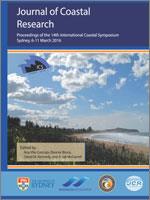Brown, J.M.; Prime, T.; Phelps, J.J.C.; Barkwith, A.; Hurst, M.D.; Ellis, M.A.; Masselink, G., and Plater, A.J., 2016. Spatio-temporal Variability in the Tipping Points of Coastal Defense. In: Vila-Concejo, A.; Bruce, E.; Kennedy, D.M., and McCarroll, R.J. (eds.), Proceedings of the 14th International Coastal Symposium (Sydney, Australia). Journal of Coastal Research, Special Issue, No. 75, pp. 1042 - 1046. Coconut Creek (Florida), ISSN 0749-0208.
To enable effective adaptive management, early warning of when a ‘tipping point’ within a system's defense may occur is vital. A tipping point is a critical threshold at which the state of a system is altered, perhaps irreversibly. After the extremity of the UK's 2013/2014 winter, many coastal systems have undergone a change in state. For example, the conversion of a sandy beach into a rocky platform or an increase/decrease in flood hazard due to a defense breach or new intervention. Coastal monitoring networks around the UK have enabled data collection of these extreme events to drive model applications to assess plausible changes in coastal conditions that trigger a sudden change in a system's state and conditions that enable recovery. Using available UK monitoring networks and a numerical approach, we focus on Dungeness and Rye Bay, a region of high value in terms of habitat and energy, to assess (i) how the natural variability within the profile of the gravel barrier modifies the overwash rates that can occur and (ii) how ambitious human intervention that re-scape the geomorphic character of the shoreline could impact the critical point at which overwash occurs.





